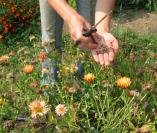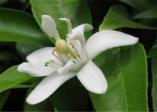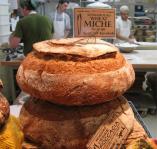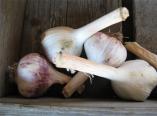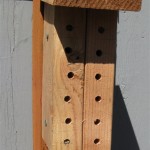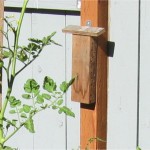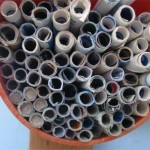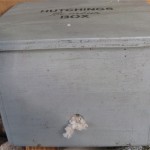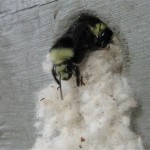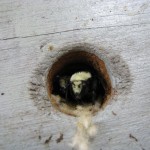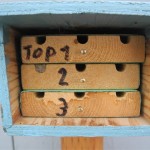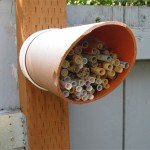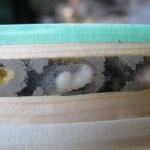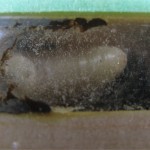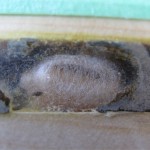 By now all my Blue Orchard Mason Bees (Osmia lignaria) are finished: this year’s adults have gone to the great flower garden in the sky and the next generation is tucked up in its nesting tubes waiting for spring.
By now all my Blue Orchard Mason Bees (Osmia lignaria) are finished: this year’s adults have gone to the great flower garden in the sky and the next generation is tucked up in its nesting tubes waiting for spring.
It seemed to me there were not as many this year as in previous years, perhaps because of the cool damp spring, and perhaps because I removed the popular block-style bee homes. These were a quick fix for the first couple of years, when I began trying to attract the bees to my garden, but I was persuaded that it would be better to switch to cleanable versions. These were pretty much impossible to clean because as soon as a tube was vacated, someone else came and filled it up again. I tried putting the house under a cardboard box with a hole in it, the theory being they’d leave and be unable to find their way back, but I was also told the tubes can provide homes to parasitic wasps and other insects with different life cycles than the mason bees, so you never know who might be sleeping in there when you dunk it in bleach solution (as I’d been advised to do).
I kept my tube home (made from a plastic pipe with an angled front to provide some protection from rain) up on the fence, adding fresh tubes rolled out of advertising flyers, and moved my Hutchings Bee Condo to the woodpile where it would be protected from the elements.
I’d read that the houses were best positioned on an east-facing wall where sunlight could warm them, but my bees seemed perfectly happy to populate the west-facing, shaded condo next door to the Bombus (bumblebee) house (where a tribe of feisty Bombus vosnesenskii have settled in for the season)
but a gratifying number of tubes have been filled and I’m going to look after these guys for next year.
Given the handy viewing panes that cover the laying tubes in a Hutchings Bee Condo, I’ve been peeking every so often to see how things are progressing and was fascinated to see the eggs had mostly hatched and the larvae were busy pupating.
They’ll live in their cocoons until next spring. I missed the boat last year, but this year I’ll be joining the many other gardeners who wash the cocoons in the winter – some use water, some use water and bleach, and some use sand – to free them of mold, bee turds and mites (Krombein’s Hairy-Footed Mite is the enemy of this wild bee; a different sort of mite from the one that plagues honeybees).
